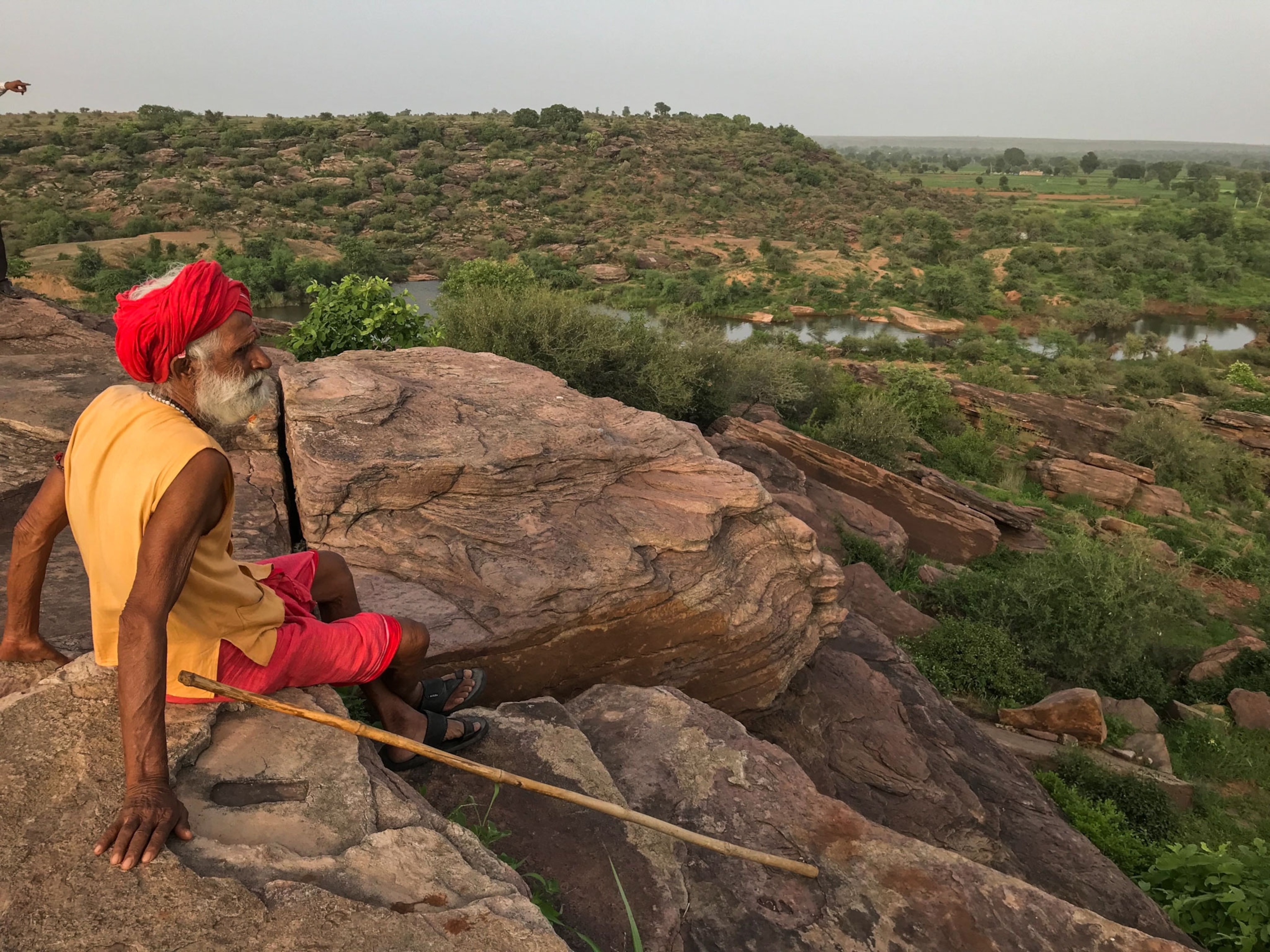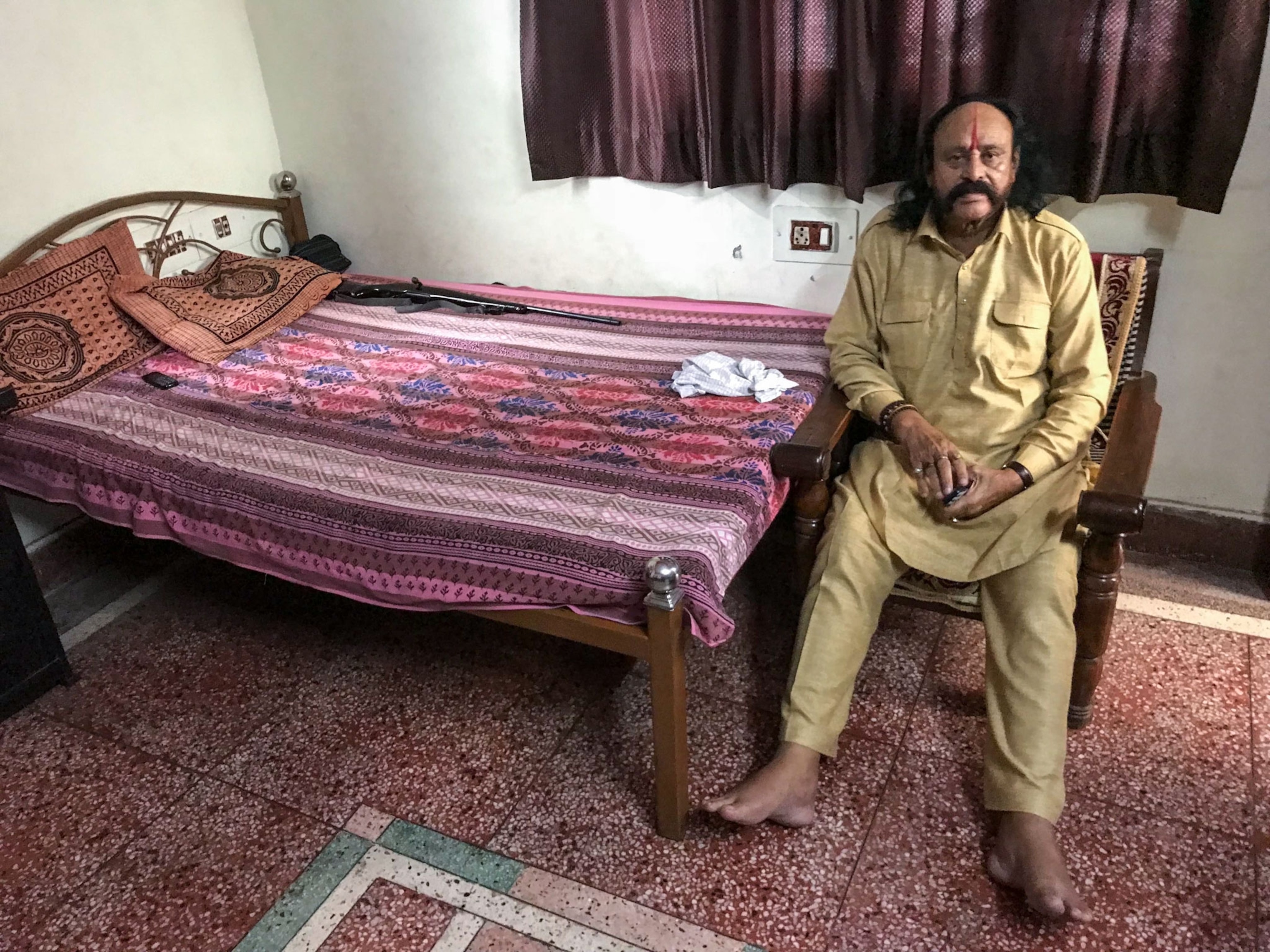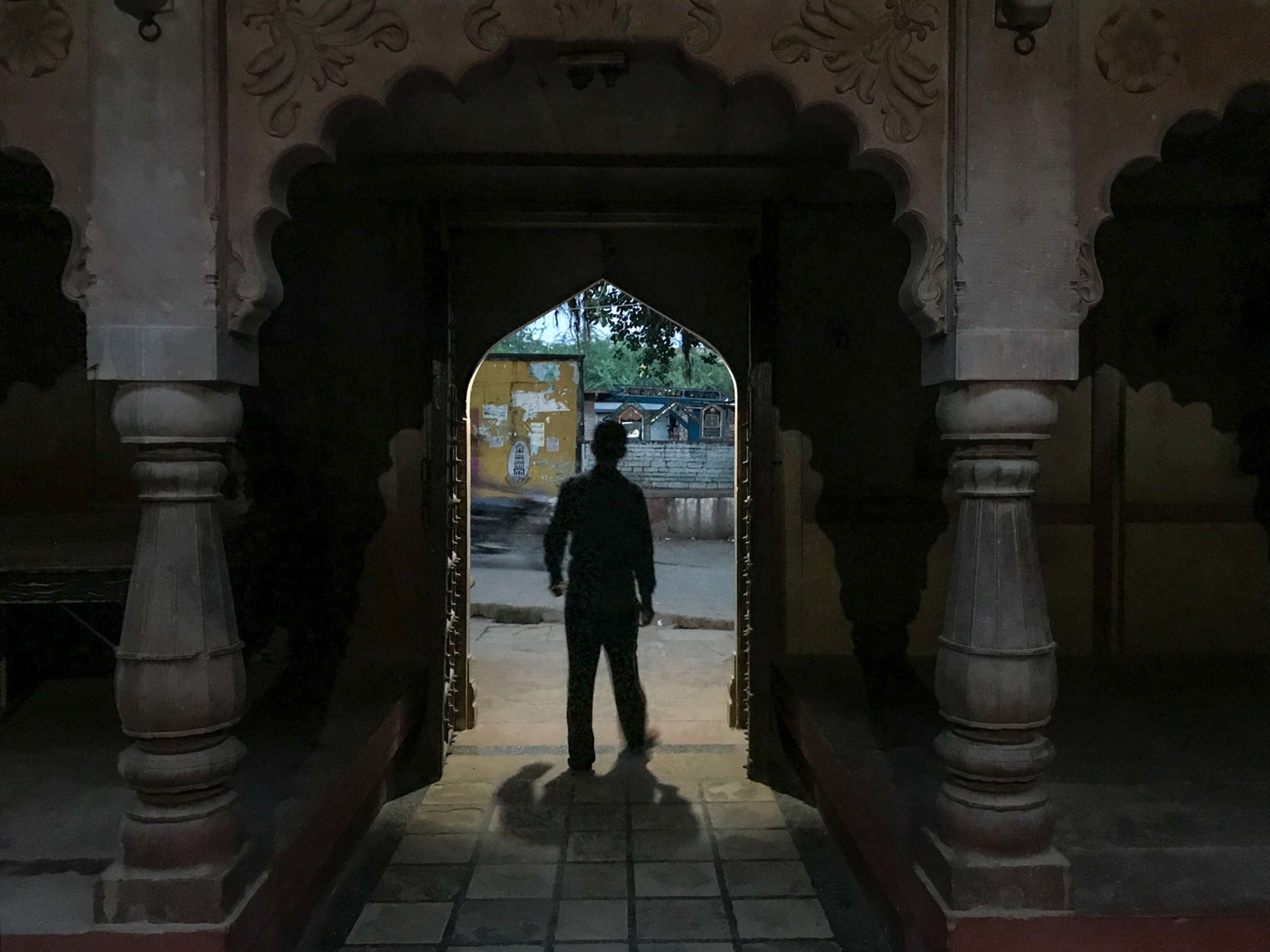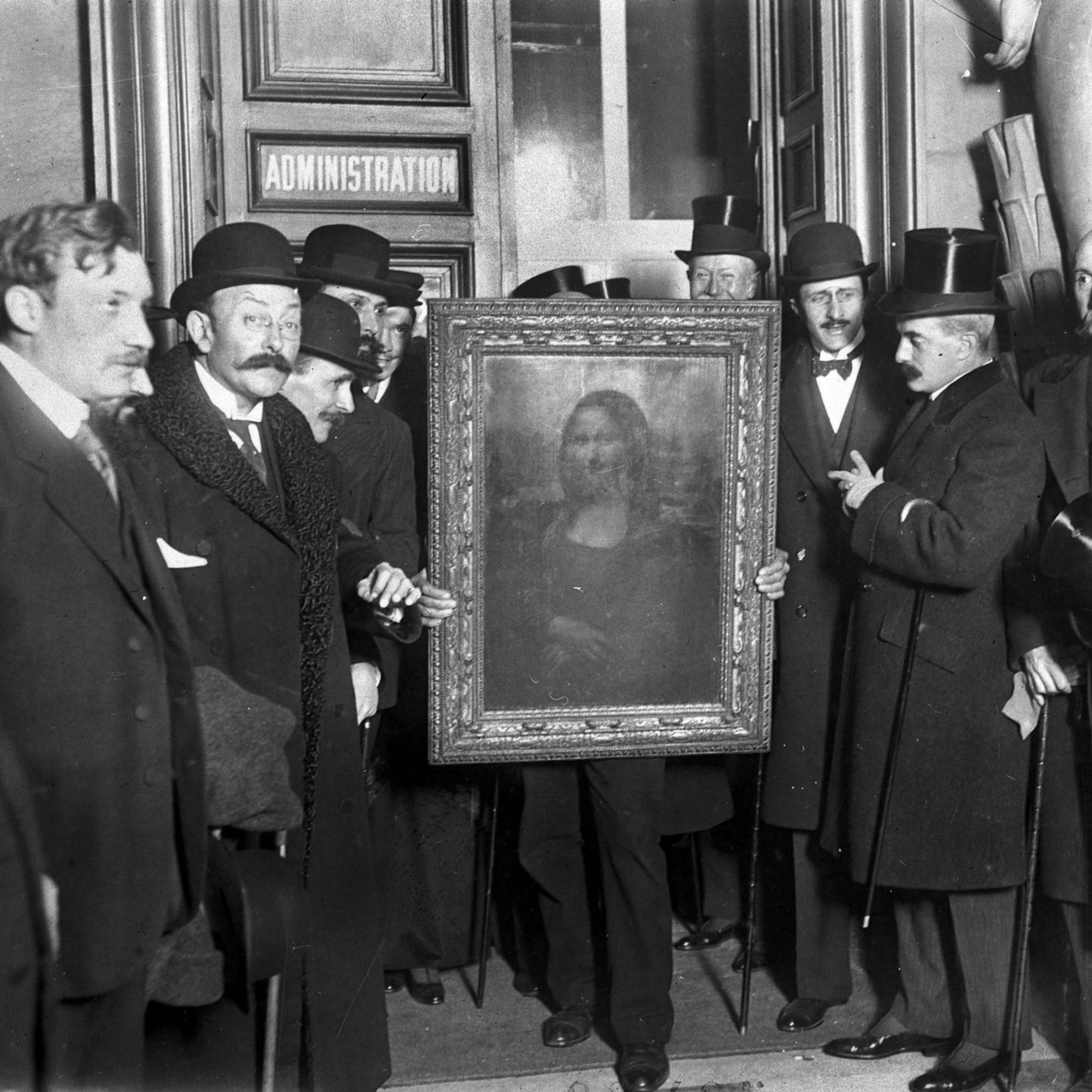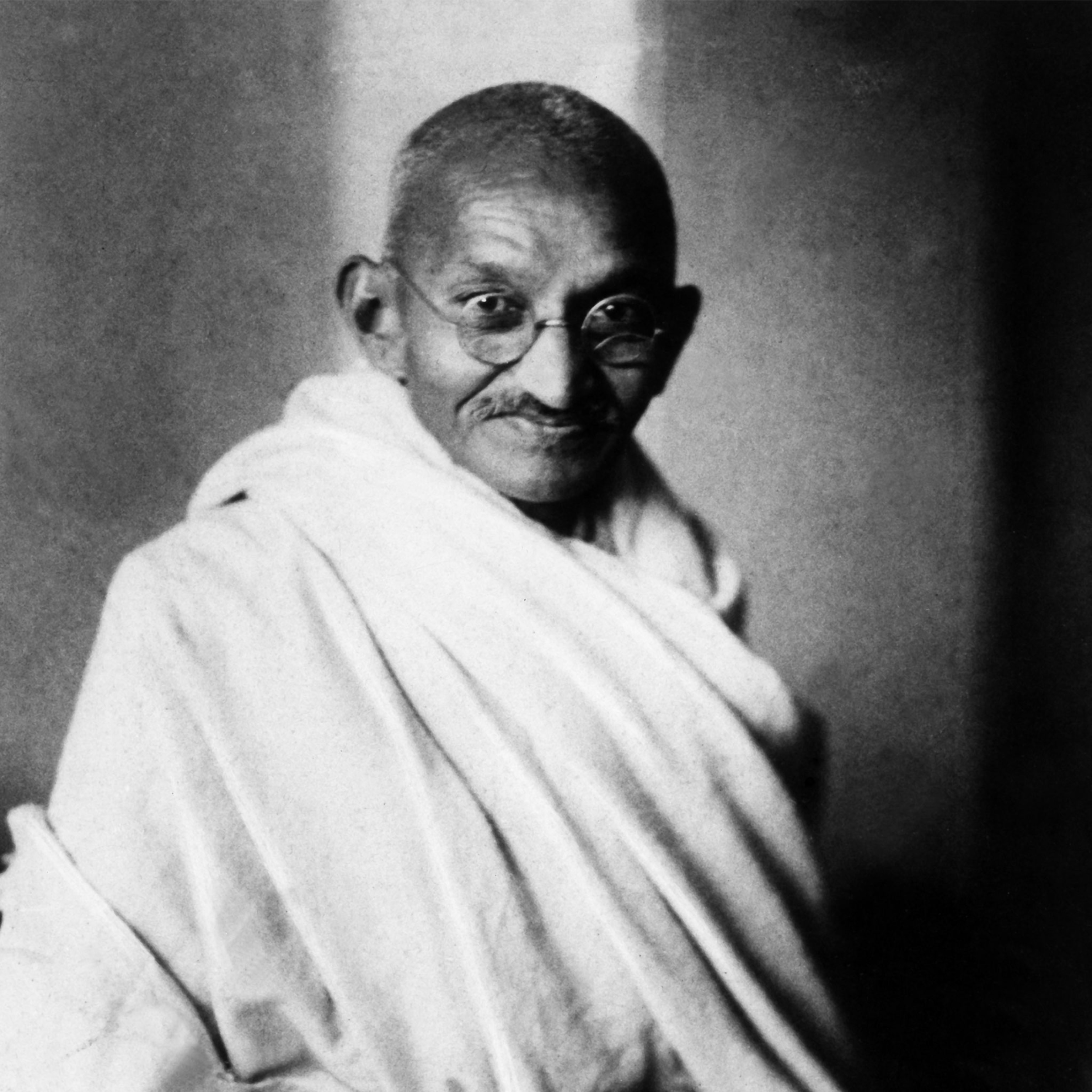Trekking India’s wild north, where bandits ruled
Bollywood long romanticized the Chambal region’s outlaws. Now, it’s a fading frontier.
“You are trying to cross the Chambal? No way.”
“Be very, very careful.”
“It can’t be done, not on foot.”
“Don’t go there.”
It is my big-city Indian friends. They have grown up on news accounts and Bollywood movies about the remote Chambal, a vast badland at the northern heart of their country: a no-go zone of lumpy hills and silty rivers infested with thugs, robbers, murderers, gangsters—with infamous highwaymen called dacoits.
But I walk across the Chambal. The local people are friendly. I meet my first dacoit in the town of Gwalior.
“I’m not a dacoit,” grumbles Malkhan Singh. “I was a rebel. I fought injustice. Besides, that was a long time ago.”
Singh is a robust 76. He sits barefooted in an ornate wooden chair, his hair thinning and an unusually large tikka, the red mark of a devout Hindu, daubed on his brow. He is wary and gruff. He surrendered to the police a long time ago, in 1983, along with scores of his criminal colleagues in exchange for a general amnesty. He served a short time in prison. He was allowed to return to a quiet life as a farmer. The police still keep a loose eye on him. But he is retired now in a small corner house in a dog-eared neighborhood of Gwalior, and he is weary of reporters. The press always comes asking the same questions. Did you kill, loot, and rob? (“What we did was clean, our reasons were clean.”) Did you ride horses? (No: Dacoits lurk on foot in the bush.) Does he worry about revenge attacks by the families of his victims?
“Fear is a state of mind,” Singh says dismissively. “I have no reasons to fear enmity. I have no fear.”
Then why is there a rifle within easy reach on his cot? Singh smiles for the first time. “What do you think I am?” he says. “A hunter?”
Sprawling across the borders of three north Indian states—Rajasthan, Madhya Pradesh, and Uttar Pradesh—the Chambal is a scrubby hinterland clawed by numberless steep and eroded ravines called beehad, a maze of bolt-holes that once made perfect hideouts for hundreds if not thousands of rural bandits who terrorized the region for generations.
India’s film industry has romanticized the exploits of the region’s dacoits in much the same way Hollywood idolizes the gunslingers of the Old West.
But in truth, organized violence of the Chambal has largely faded. The bad men are now mostly dead or doddering. By the early 2000s, massive police operations, the use of helicopters, and inexorable road building left the lawless with no place to flee.
Dilip Singh Parmar, the deputy mayor of an isolated town called Sirmathura, remembers those recent frontier days.
Parmar recalls how a network of police outposts displayed “wanted” posters offering hefty rewards for the most famous robbers. Some dacoits racked up scores of murder charges. They were ruffian kings of the gullies and hills. They looted businesses, it is true, but if you were poor, they might also pay your medical bills or bankroll your wedding. Their favorite tactic: Kidnap rich people and cut off their fingers, noses, or ears to nudge wealthy relatives to meet demands for ransom.
The new dacoits prey on women and espouse no Robin Hood principles.
The taproots of all the mayhem were lodged deep in India’s triple inequities of underdevelopment, feudalism, and caste, Parmar says.
“Before independence we had zamindars [landlords] who collected taxes, and paying those taxes was very difficult,” he says, noting that many of these landlords were from a warrior class of aristocrats called Rajputs. “If you were a Rajput, you lived in a big house, rode a horse, and nobody from a lower caste could use your well, or sit under your trees,” he says. “The only way the oppressed could fight for their dignity was with a gun.” (See how today's youth are ignoring caste-based limitations.)
Perhaps the most famous of the brigands was Phoolan Devi, a village woman who, after being gang-raped by Rajput overlords, became a “bandit queen” and set out to avenge herself by allegedly slaughtering 22 Rajputs in a single battle. Movies were made of Devi’s life. She became a member of India’s parliament, before being assassinated in a vendetta.
But Bollywood’s heroic version of dacoits, as class revolutionaries, obscures a more complex truth. Even local Rajputs became outlaws. And the harsh honor culture of the Chambal people—a violent code of masculine respect with echoes in other hard edges of governance, from Appalachia to the Caucasus—also played its part.
“We have large families and small land holdings that can’t be divided,” says Balwant Tomar, 66, who’s had nearly 150 criminal charges laid against him and who admits to gunning down nine men in his past career as a dacoit. “A lot of the families would fight each other. And if you can’t get justice from the government, then what do you do? You starve or become a dacoit.”
Ashok Bhadoriya, an “encounter specialist,” or special operations police agent, based in Gwalior, has helped Indian law enforcement kill more than 116 dacoits and put more than 1,000 in jail over the course of his 30-plus year career. (Watch a mediator calm tensions between fueding familis in Albania.)
“There’s something in the Chambal water that makes people blunt and aggressive,” Bhadoriya says. Tall, quiet, squarely built, he moves with the gingerly step of someone who’s walked miles into the hills and survived being shot in an ambush. “One dacoit put a 50 lakh rupee bounty on my head,” he says—about $70,000.
Bhadoriya thinks the nature of crime has changed in the Chambal today because the people have changed. Few local youths can endure the rain, mud, scorpions, and walking of a rural outlaw life on the lam, he says. The new dacoits are urban. They have grown soft. They prey on women and espouse no Robin Hood principles. Unlike the old thugs, who had their codes. It is an old story.
Bhadoriya himself is now retired and gone into politics. He has contested a seat in the legislature with an opponent he once helped jail, Malkhan Singh, the former dacoit who sleeps with a rifle.
